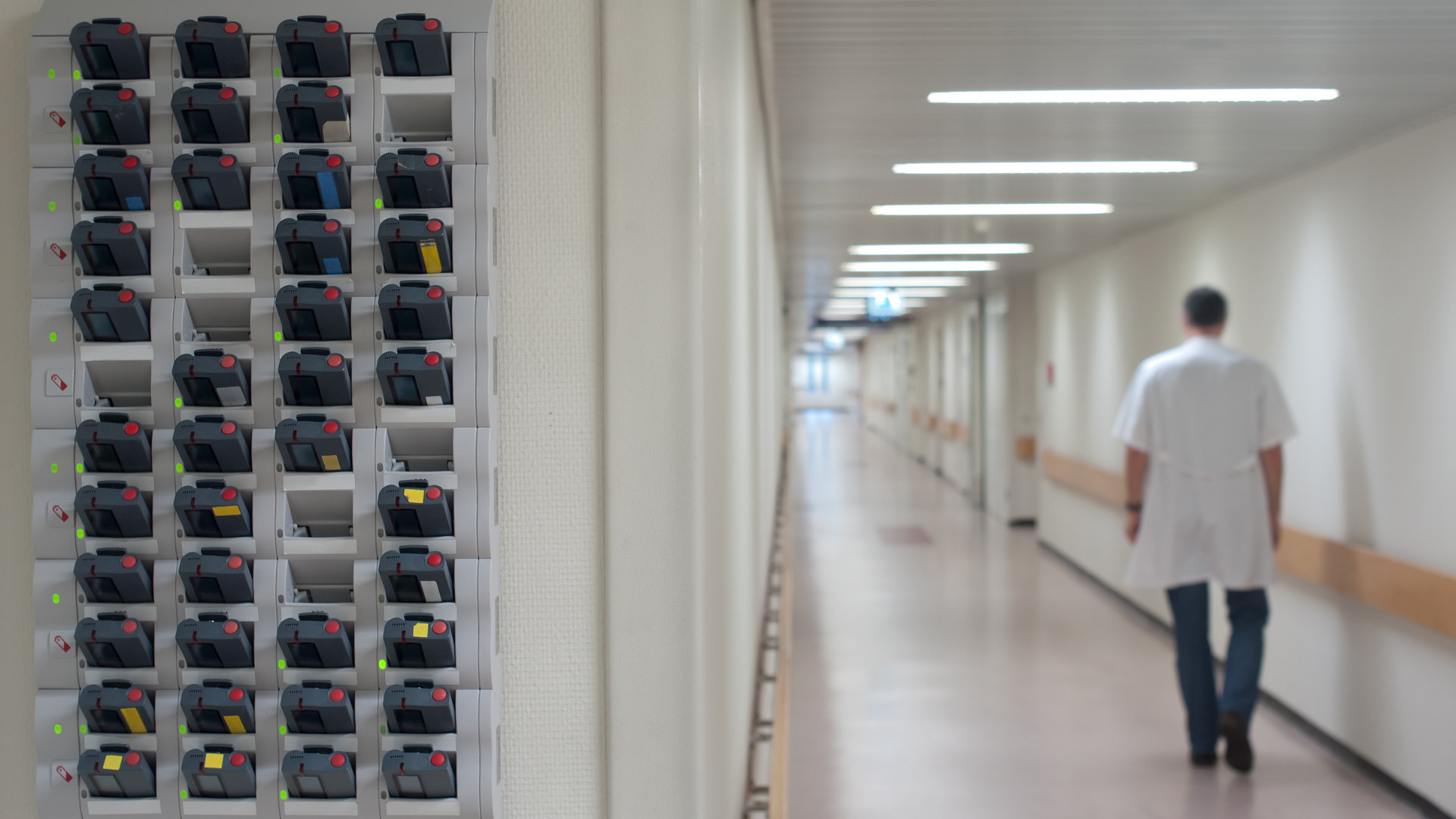 A collection of traditional pagers, devices once commonly used by doctors for hospital communication, now being replaced by modern smartphone-based systems.
A collection of traditional pagers, devices once commonly used by doctors for hospital communication, now being replaced by modern smartphone-based systems.
Image credit to @gettysignature via Canva
For many decades, pagers, often called beepers, were synonymous with hospital communication. They were the ubiquitous devices clipped to doctors’ belts, signaling urgent notifications. However, with the rapid advancement of technology, especially the proliferation of smartphones and sophisticated communication platforms, the question arises: do doctors still use pagers in today’s healthcare environment? This article delves into the current state of pager usage in hospitals and explores the modern alternatives that are reshaping clinical communication.
The Diminishing Role of Pagers in Hospitals
While it might be surprising to some, the simple answer is that yes, some doctors still use pagers, but their prevalence is significantly decreasing. Pagers are not entirely extinct in hospitals in 2023, but they are becoming increasingly less common as healthcare facilities transition to more advanced and efficient communication technologies. The era of the pager as the primary communication tool in hospitals is undoubtedly waning.
Why Are Hospitals Moving Away from Pagers?
Several key limitations of pagers contribute to their decline in favor of modern solutions. These limitations highlight the growing need for more versatile and effective communication tools in the fast-paced environment of modern healthcare.
Pagers: One-Way Communication and Limited Functionality
One of the most significant drawbacks of pagers is their one-way communication nature. Pagers are essentially receivers; they can only receive and display short, often numeric, messages. This one-directional communication creates significant limitations for real-time coordination and comprehensive patient care management. Doctors receiving a page cannot directly respond or request further information through the pager itself. This necessitates a separate follow-up action, often a phone call to a central operator or another colleague, adding extra steps and potentially delaying critical responses.
In contrast, modern communication tools like smartphones and dedicated healthcare communication platforms offer two-way communication capabilities. This allows for instant feedback, clarification, and interactive dialogue, significantly streamlining communication workflows.
Infrastructure and Cost Considerations
Traditional pager systems require a dedicated network infrastructure, including transmitters and receivers, which can be expensive to install and maintain. In an age where wireless networks are already widely available and utilized for numerous hospital operations, maintaining a separate pager infrastructure is becoming increasingly less cost-effective.
Modern communication solutions, especially those leveraging smartphone technology and existing Wi-Fi or cellular networks, offer a more economical approach. These systems often utilize infrastructure that hospitals already have in place, reducing the need for additional investments in dedicated communication networks.
Modern Healthcare Communication: Beyond the Beep
The 21st century has ushered in a new era of healthcare communication, characterized by sophisticated tools designed to overcome the limitations of pagers and enhance clinical workflows. Hospitals are increasingly adopting comprehensive communication platforms that leverage the power of smartphones and secure messaging technologies.
These modern solutions offer numerous advantages:
- Two-Way Communication: Enabling instant responses, clarifications, and interactive communication between healthcare professionals.
- Multimedia Messaging: Facilitating the exchange of diverse information formats, including text, voice, images, and videos, which can be invaluable for conveying detailed patient information or visual assessments.
- Improved Documentation and Compliance: Providing a more complete and auditable record of communication, crucial for documentation accuracy, legal compliance, and quality assurance.
- Enhanced Efficiency and Speed: Streamlining communication processes, reducing delays in response times, and accelerating decision-making in critical situations.
- Better Collaboration: Fostering seamless communication and collaboration among multidisciplinary healthcare teams, leading to improved patient care coordination.
Platforms like Hypercare exemplify this shift towards advanced healthcare communication. By transforming smartphones into powerful communication devices, these platforms offer a virtual pager system with significant improvements over traditional pagers.
Hypercare’s Virtual Pager System: A Step Forward
Hypercare’s virtual pager system presents a compelling alternative to traditional pagers, addressing many of their shortcomings and offering enhanced functionalities.
Reliability and Improved Escalation
Hypercare’s system leverages the reliability of smartphone technology to ensure messages are delivered promptly and consistently. Furthermore, it incorporates intelligent escalation protocols. If a message is not acknowledged by the initial recipient, the system automatically escalates the notification to ensure critical information is not missed. This automated escalation significantly improves response times and patient safety.
Smarter Alert Management and Contextual Information
Unlike pagers that deliver all notifications with the same urgency and limited information, Hypercare’s app intelligently distinguishes between routine messages and critical alerts related to acute patient care. This smart alert management helps combat alert fatigue, a significant concern in healthcare settings, by ensuring that clinicians are promptly notified of truly urgent matters. Moreover, Hypercare allows for messages with richer context and more information than the character-limited displays of traditional pagers, reducing the need for follow-up calls and accelerating informed decision-making.
Seamless Integration and Flexibility
Hypercare’s virtual pager system can integrate with other hospital systems, streamlining communication workflows and enhancing overall efficiency. Additionally, it offers flexibility in managing notifications, even allowing time-sensitive messages to bypass “do-not-disturb” modes when necessary, ensuring critical alerts are always received while respecting clinicians’ need for focused work periods.
The Future is Digital: Pagers and the Evolution of Hospital Communication
While pagers may still linger in some corners of healthcare, the trend is clear: hospitals are progressively moving towards modern, digital communication solutions. The limitations of pagers in terms of functionality, cost, and efficiency are driving this transition. As healthcare continues to prioritize seamless communication, rapid response times, and enhanced collaboration, the adoption of smartphone-based virtual pager systems and comprehensive communication platforms like Hypercare is set to accelerate. The future of hospital communication is undoubtedly digital, offering more effective, reliable, and patient-centered solutions than ever before.

